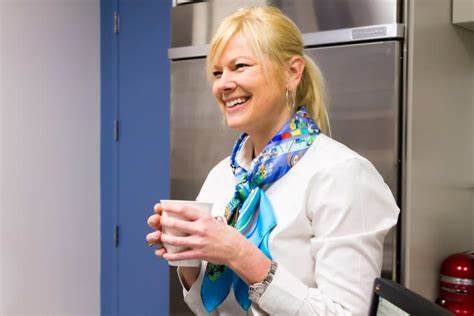
Podcast: Play in new window | Download (Duration: 37:31 — 34.3MB) | Embed
Subscribe: Apple Podcasts | Spotify | Email | RSS | More
Exploring the journey of coffee from farm to cup with expert Jen Stone, delving into flavors, cupping, & the ethics of coffee production. Music & Health, too
Full 36-min episode on YouTube
Two five-minute clips on YouTube.
Click here to view or download the printable newsletter
Contents
Episode
Proem
When I take two minutes to bitch about the annoyances of having Multiple Sclerosis, I insist that I can’t be repetitive. I must whine and complain with new words. How many words do we have for describing symptoms of pain? Not enough. Sharp, dull, achy, daily, itchy radiating, nauseating, disabling.
Greenland has 46 words for snow and no wonder. Profound knowledge about something leads to more words being needed and created. The better we can describe ourselves to ourselves, the deeper we understand our nuances. More accurate and specific descriptions lead to better communication of our symptoms, moods, and circumstances with our health team. Then, we can make informed decisions, plan, and adjust together.
Believe it or not, this rant about words leads us to today’s episode on coffee. Welcome to my new hat – coffee snob. Our guest is Jennifer Stone, my colleague in my Thursday morning mastermind group for solo entrepreneurs. Jen is a Sommelier of Coffee and the host of the Coffee Explorer Podcast, a Quality Lecturer, and a Licensed Q Grader by the Coffee Quality Institute. She is internationally recognized as an Expert Coffee Taster and Judge for the Cup of Excellence. She has expertise in finding, sourcing, and sharing remarkable coffees from quality global producers. Over her career, she’s opened multiple cafes and created several direct-to-consumer and business-to-business specialty coffee brands. She provided expertise to others in these areas and is always excited to share the best ways to brew coffee with the market. Jen Stone has opened my eyes in unexpected ways. Drink up!
Podcast intro
Welcome to Health Hats, the Podcast. I’m Danny van Leeuwen, a two-legged cisgender old white man of privilege who knows a little bit about a lot of healthcare and a lot about very little. We will listen and learn about what it takes to adjust to life’s realities in the awesome circus of healthcare. Let’s make some sense of all of this.
Introducing Jennifer Stone
Health Hats: Jen, you’ve opened many senses for me. We met over the business. We are working together on our business; you know how that’s growing and managing. But I’ve learned from you about coffee, not just coffee.
It’s about the sense of taste because it’s not just, you know, while I’m learning to appreciate fine coffee. I was concentrating more on what was happening in my mouth. I’m finding it with food, chocolate, and alcohol, and just more awareness.
Health is Fragile
Health Hats: When did you first realize health was fragile?
Jennifer Stone: This is such an interesting question. I love that you asked about the word health as fragile and not life as fragile. When a loved one passes, or you have a near-death experience, that speaks about life, but health, specifically, is a little vaguer. About a year and a half ago, I could say I loved to run. I’m not fast, but I love to jog and exercise. One of my knee joints began to wear down. I have some arthritis in one of my knees, and it felt like this bone-on-bone thing. It was disabling. After a few days of it not going away, no matter how much ibuprofen I took, I realized I needed my knee to strengthen. I don’t want to focus on my knee. I had a dog who needed to run outside quickly occasionally. And I need to be able to take care of my family and go to the grocery. My job requires me to go through airports, make presentations, and stand and walk. It’s a privileged framework, but I have always been ridiculously healthy. Thank God I have had my health, so I’m sensitive to anything glitchy. It was frustrating, and I realized that that little thing could impact my life, much less something larger.
Profound Knowledge of Coffee or Caffeine
Health Hats: So, how does coffee fit into that? There are so many levels. I describe you as a coffee maven, and I don’t know what that means, but I think you’re a coffee expert. Maven sounds cooler. It impresses me that one of the things that I know about health is that a profound understanding of something is helpful. The more you understand, like you’re talking about your knee and you’re running, the more you understand what’s happening to your knee, the more you can manage your overall health.
You’re a coffee expert. You understand the coffee process profoundly. So, is there a health piece to that? The only thing I ever hear about coffee and health is about caffeine. Dark coffee doesn’t have any caffeine, but decaffeinated coffee has more. Does caffeine make any difference? Is that part of your expertise?
Jennifer Stone: I am highly aware of that because, as with any industry, health or culinary, it’s very whimsical. You’re only as informed as the following article about coffee, health, cheese, or butter or how much walking you should do versus how much weight you should do. I am aware of it. I have some thoughts about coffee and health: The net-net is what we must distinguish. Are we talking about caffeine or coffee?
Health Hats: Okay, go for it.
Caffeine Delivery System
Jennifer Stone: Coffee is a very effective caffeine delivery system. Everybody probably has a loose awareness of their caffeine or coffee limits. We can push those occasionally, but we keep everything in moderation. Technically, coffee is a plant. Coffee is a fruit, a seed of a fruit. It’s full of antioxidants. I’m not going to list them. It’s full of things that are good for you. Because we’re sipping it slowly over maybe 20, 30-minute the delivery system is effective, especially with drip coffee. I say two things about that. One is it’s a good cup of coffee – you and I have talked about this – that moment happens, time slowing. I love that you used it, and I’ve written it down: that sense of taste. Can it transmute to a sense of place and that moment of drinking or brewing a nice cup of coffee?
Be it caffeinated, decaffeinated, or otherwise. Good coffee brewed well is the starting point for that experience. Coffee has also become a delivery system for additives like cream and sugar. That’s a choice. Is this the way I’m going to have sugar today? Milk? Now, we’re adding unflavored collagen to coffee.
Health Hats: Wait a minute. Say that again when you say collagen. That caught my attention.
Jennifer Stone: So, there are, for example, vital proteins. This collagen has peptides that are highly dissolvable. It doesn’t taste like anything.
Health Hats: Oh. You were talking about additives. Okay. Thank you.
Jennifer Stone: People add a range of things to their coffee that may or may not be beneficial for their health.
Coffee Cupper
Health Hats: The whole process is so interesting. You tend to work with specific growers, roasters, and vendors. How do you choose them? You’re not looking at instant coffee. You do all this work for us. What’s that about?
Jennifer Stone: That is such a great question. Over the years, I’ve developed my expertise and my experience in coffee. People tell me I am an excellent cupper, which means I’m a good person who tastes coffee and assesses coffee quality. I have a designation by the Coffee Quality Institute as a quality grader. And so, a framework for tasting coffee is an international language, a common language for assessing the coffee quality that a small group can use. So, I use that point system framework. Does this coffee score high on acidity, brightness, flavor, aftertaste, or other things? We want to eliminate things with negative attributes, like whether they are sour or taste like a band-aid.
Health Hats: Or burnt.
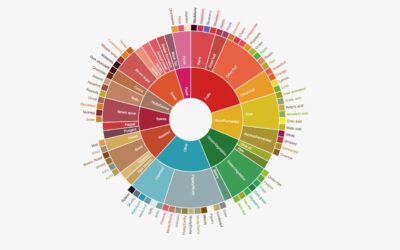
Figure 1: From https://millilitre.my/good-reads/basic-coffee-tasting-wheel-and-how-to/
Coffee Flavor Notes
Jennifer Stone: I’m looking for harmonious flavor and complexity when thinking about coffee. I love it when I can taste a chocolate note or a milk chocolate note, specifically maybe pumpkin spice or a baking spice in the coffee; that is when I can detect a few different flavor notes. I think you could detect anyone who enjoys drinking coffee, and then I think it is a coffee that most people will want to taste and try. So that’s what I’m looking for. And then with my, you know, years of network and relationships and new things happening in coffee all the time, you know, I look. I seek those coffees out from producers. I find out what they’re doing at the farm, too. To make their coffees taste so good, and that’s research. You must kiss a lot of frogs.
Call to action
I now have one URL for all things Health Hats. https://linktr.ee/healthhats to subscribe for free or with a contribution through Patreon. You can access show notes, search the 600-plus episode archive, and link to my social media channels. Your engagement by listening, sharing, and commenting makes quite an impact. Thank you.
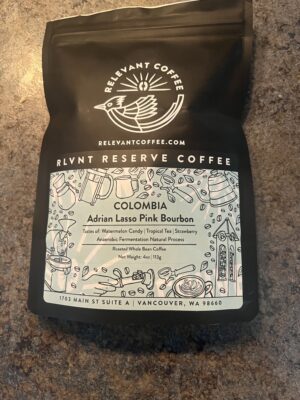
Coffee Flavor Notes in My Cuppa
Health Hats: I’ve got my cuppa and the label, and I’m thinking about what this says here. Taste of watermelon candy. Tropical tea, strawberry anaerobic fermentation. Natural process.
Jennifer Stone: Yes.
Health Hats: Relevant Reserve Coffee, Columbia, Adrian Lasso, pink Bourbon. It’s amazing.
Jennifer Stone: Do you love it?
Health Hats: I do. It’s intriguing, and it’s not something that I’m going to drink routinely. I’m drinking it now because I knew I would be on the phone with you. It’s a coffee that makes you want to think, so much think as taste. What is this? Never read watermelon candy, tropical tea, or strawberry. I’m always amazed at how that goes. Where do those descriptions come from?
Jennifer Stone: We have the advantage of being in the lovely vacuum of the cupping table, tasting that coffee in a tranquil, controlled atmosphere with our worksheets in front of us. We are specifically looking to find those flavors of the acids, the fruits. We seek out fruits. And we are looking for the level of body or the mouth fill. So again, in that vacuum, we can say words like watermelon and candy. The notes I had hit out of the park with those sweet, fruity notes; I found things like peppercorn, and I found it to be very buttery in terms of texture. And so, with wine tasting, you must train your mind to think about these specific notes, but part of the adventure.
Health Hats: It’s like music.
Jennifer Stone: Yes, it is. This coffee is not something you want to drink daily. It’s not something I even want to drink every day, but I love that so much artwork went into producing this coffee by Adrian Lasso. It was a very controlled experiment with a lot he had to discard because of the controlled fermentation you must do to make coffee taste this good and sweet. Otherwise, it could taste not good. It’s an art form.
Different tastes and circumstances
I don’t want every coffee to be like this: It’s not a gateway coffee. I gave some to my mother, who doesn’t drink much coffee. She doesn’t drink caffeine. She didn’t like it. We have a friend in common, Seth Godin. I sent him a similar coffee. he roasts coffee., I gave him some green coffee that had a similar process, and he roasted it and didn’t love it at all. Even the smell is very peaty. I think that’s okay. It opened my eyes because even though it’s the highest quality coffee, and maybe it scores like a 98, it doesn’t mean you’ll like it even if someone says it’s the best.
Fermentation
Health Hats: What does fermentation have to do with making coffee? This isn’t like liquor.
Jennifer Stone: Some crossovers are happening to make the coffee taste a certain way. As a fruit, coffee cherries, that’s what we call them, look like cranberries, except they’ve got these two seeds in the middle that face each other like this. is where it becomes. There are various ways to remove that cherry from those seeds and allow fermentation with some pulp on the seed. That imparts those pulpy flavors to the bean significantly. People even add cinnamon when the coffee cherry must be fermented or washed off. That results in flavored coffee beans versus flavoring agents added after the roasters roast the coffee.
Health Hats: Oh, so people add stuff afterward.
Jennifer Stone: Yeah, and if you love it, you love it. I don’t judge. It’s a fantastic way to have a high-quality coffee, but if you enjoy the taste of it, you know, at Christmas, then.
Transparency
Health Hats: Looking at a label, how would you know whether the watermelon, whatever, came from the bean itself or somebody added a drop of watermelon flavor to it?
Jennifer Stone: That is a good question. Today’s Roasters have become more transparent about saying we did this at the farm, and it tastes like watermelon. High-quality roasters will not use flavoring agents because they are harsh, like polypropylene glycol, just powders and things you would add after roasting, creating Snickerdoodle.
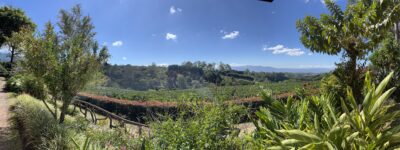
A view of a field of coffee plants
Social Justice in Coffee Making
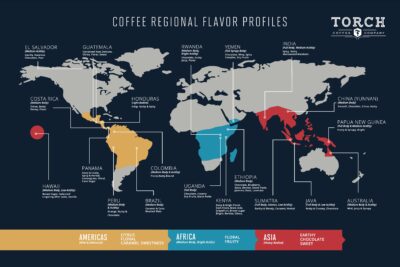
Figure 4: Image from https://www.torchcoffee.asia/resources
Health Hats: One of the things I found interesting, especially after I went to a Costa Rican coffee farm in Alajuela. I came back full of questions. With luxury goods, it’s usually the people at the beginning who get screwed in the process. Something is high-end, and there’s a lot of charge, and it’s like people who didn’t do the work are making the money. And I remember you talking a little about how you go around, and when you travel and go to farms, you’re selective about how you choose the farms you want to work with. So, is there a social justice piece to this?
Jennifer Stone: That’s as fine a word as any. Coffee is a third-world product, generally grown in a band near the equator, encompassing countries like Honduras and El Salvador, which are struggling. But also Brazil, Columbia, Indonesia, and Sumatra. And then Africa, maybe Kenya, Ethiopia, and Tanzania, are where you’re producing this penny for a pound of product that has been highly leveraged to stay down like that. When I work with individual farmers who have had some opportunity to get coffee on the map, it could be through different programs, like a Cup of Excellence, which holds auctions in countries anybody could submit. People like me come in, people in the country, come in and taste their coffees and recognize their potential or how good they already are. It allows producers and importers to come in and pay more for those coffees because they want them more.
Health Hats: Coffee isn’t cheap. You go to Starbucks, and I have no idea what’s happened to this costly cup of coffee. But I’ve built a relationship with you where you’re curating the coffee for me, and I sense that you’re paying attention to the whole process.
I’m interested in what you pay attention to with the farmers. The beginning is growing the bean, so what are you looking for? Because your coffee is expensive, but it’s not outrageous by any means. There is way more expensive coffee out there. You sent me that Rwanda coffee, which was a little more expensive. It was worth it. Is the farmer getting more of that?
Jennifer Stone: At the core, I have discovered a correlation between higher quality, better tasting, and hitting all top end of the marks on the cupping sheet. Those farmers tend to take better care of their farms and those who work there; it just goes hand in hand. The farms and the farmers often provide housing. Often, coffee pickers are transient, like in the US, and they’ll move from farm to farm during harvest. But they can receive housing, school, and healthcare, and different aspects of their life are improved because they are in coffee. So that farmer must charge. Moreover, they can charge for their beans if the market is depressed. But we’ve come into an era where we can pay as much as needed for that farmer to have that coffee again next year, and we’re starting to think about sustainability.
Health Hats: Right. Being able to predict your market.
Jennifer Stone: Yeah. Year after year.
My Palette
Health Hats: I’ve learned much from you in my exploration of coffee over the past few years. I know enough to be dangerous now. I already knew what aftertaste was; how long do you taste something? I have this image in the mind of my tongue and palette, the entire tongue, and the roof of my mouth. It’s been a while since I had a sip, and I can still taste it, mainly on the roof of my mouth and a little bit on the middle of my tongue. I taste the rare coffee on the back of my tongue. I find that interesting when I do, just because it’s different. Then there are coffees you’ve given me that are burst, like pow. You know, as opposed to Hmm.
Jennifer Stone: Like music,
Health Hats: Like cheese, I’m not much of a wine drinker, but I like whiskey. I don’t often like to slow down and taste.
Slow down and taste

Figure 5: Selfie of Danny and JoJo on Porch
Health Hats: I have been drinking more coffee. My dog likes to sit out on the porch in the morning and sit on my lap, and we watch whatever is going on with a cup of coffee. I’m sitting there with the dog. I can take the time.
Jennifer Stone: Yes.
Health Hats: I don’t like multitasking with my coffee.
Jennifer Stone: Yes. I love that. It is such an exciting idea to experience the coffee aftertaste, finishing in geophysics physiologically. Where in your mouth are you tasting it versus what you’re tasting? Is it sour or bitter or chocolatey or sweet? I think that you know, that takes that sensory experience too. Another level that I don’t hear very often. I think that’s very insightful thinking of it that way. That’s quite interesting.
You’ve ruined me a bit
Health Hats: I enjoy the experience of understanding how it’s grown, about the workers, and less exploitation of the third world. I don’t like feeling like I’m taking advantage of people in what I consume. I like stopping for five seconds and tasting this cup of coffee, tasting this mouthful of coffee. It’s like a sigh. Right. I’m just going to sit here for a second. I don’t have to think about what I must do next and whatever I’m puzzling over, but I can appreciate and relax with this taste. So, we could do this once a year. It’s such a journey. I can’t believe how much I feel like I know. In a way, you’ve ruined me, to tell you the truth. I can’t go to Starbucks anymore. It’s too strong. I can’t taste any notes.
I am more discerning when I’m away from home. I try to bring coffee with me because I love the routine of drinking coffee. Sometimes, I drink, and I’m disappointed. Like, oh my God, that was nothing. Or, oh my God, that was burnt. I can’t identify anything, and I get it; I’m so disappointed. Well, thank you for that.
Equipment

Figure 6:Timemore Nano Manual Coffee Grinder
Jennifer Stone: I do want to ask you one question. We spoke several months ago, and you were looking for a coffee grinder. I sent you all these links to try. Tell me again about your experience with the grinder that you purchased.
Health Hats: All right. I’ll put something about it in the show notes, but it’s small. I think metal, like cast iron, is a one-cup grinder that allows you to adjust the fine grind. And it’s made. The design of it is fantastic. I pay much attention to design and healthcare and am very attuned.
And it’s straightforward to crank it. I feel like it’ll last forever. The handle folds down; you put it away. It takes up a tiny gym. We have a tiny kitchen. It’s a small footprint. Before that, I used this electric grinder, which was like one grind. I remember talking to you about it when I was starting to.
Jennifer Stone: The blade grinder.
Health Hats: Yeah, it was a blade grind, an electric blade grinder.
Health Hats: Well, you pointed me to a company and a grinder, and yes, I picked something different than you suggested because it was smaller. A Timemore Nano Plus Manual Coffee Grinder
Jennifer Stone: You’re hand grinding your coffee like people do when they’re camping. You’re traveling. But I love that you shared with me that you now enjoy the experience of grinding coffee, even though it takes longer than 30 seconds.
Health Hats: No, it doesn’t take long – 30 seconds. It’s way better, and I could adjust the grind. I had to try a little. My style of trying stuff is to overshoot the mark and back up. Do you know what I mean? It was easy to do that. It holds whatever I set, and I don’t do anything now. I like how it is. It makes my experience of it. That’s what I feel like. It’s just the whole experience.
Jennifer Stone: Not only does fresh ground coffee taste better, which we always talk about, but it also enhances your hand grindings and coffee-drinking experience.
Health Hats: Thanks. This is great.
Jennifer Stone: Thank you.
Reflection
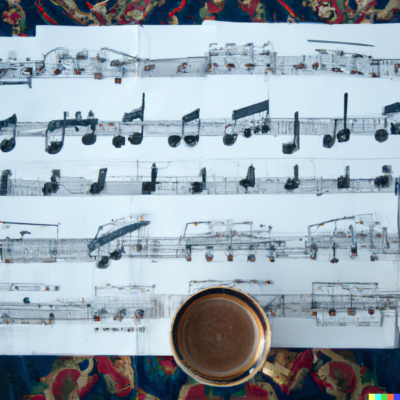
Image from DALL·E 2024-03-12 10.41.27 – A tapestry of coffee, notes, music
Coffee, notes, music – a logical progression. I’ve played music for the last 40 years. I’m just beginning to quiet my mind and let the music flow over me, not as background, but as hearing (tasting) notes, pitches, dynamics, location of sensation, emotion, individual instruments, parts, sections, coherence, and cacophony. I could go on. I love learning, be it music, podcasting, or coffee. I get high on the image of new pathways snaking across and around the Swiss cheese of my MS brain. Coffee, notes, music.
Podcast Outro
I host, write, and produce Health Hats the Podcast with assistance from Kayla Nelson, Julia Higgins, and Leon and Oscar van Leeuwen. Music from Joey van Leeuwen. I play Bari Sax on some episodes alone or with the Lechuga Fresca Latin Band.
I buy my hats at Salmagundi Boston. And my coffee from the Jennifer Stone Collective. Links in the show notes. I’m grateful to you who have the critical roles as listeners, readers, and watchers. Subscribe and contribute. If you like it, share it. See you around the block.
Please comment and ask questions:
- at the comment section at the bottom of the show notes
- on LinkedIn
- via email
- YouTube channel
- DM on Instagram, Twitter, TikTok to @healthhats
Production Team
- Kayla Nelson: Web and Social Media Coach, Dissemination, Help Desk
- Leon van Leeuwen: article-grade transcript editing
- Oscar van Leeuwen: video editing
- Julia Higgins: Digit marketing therapy
- Steve Heatherington: Help Desk and podcast production counseling
- Joey van Leeuwen, Drummer, Composer, and Arranger provided the music on the intro, outro, proem, and reflection including Moe’s Blues for Proem and Reflection and Bill Evan’s Time Remembered for on-mic clips.
Credits
I buy my hats at Salmagundi Boston. And my coffee from the Jennifer Stone Collective. I get my T-shirts at Mahogany Mommies. As mentioned in the podcast: drink water, love hard, fight racism
Inspired by and Grateful to
Jeff Horner, Fred Guitierez, Ellen Bloom,
Links and references
Jennifer Stone (@jstonecollective) • Instagram photos and videos
LinkedIn Jennifer Stone | LinkedIn
www.jstonecollective.com, where you can find my podcast, Coffee Explorer
Bio:
Inspiring Coffee Drinkers to Become Coffee Tasters. From sourcing and roasting to brewing and training, I work with customers and coffee drinkers to improve their coffee skills and ultimately brew the most perfect cup imaginable.
I am a quality lecturer and licensed Q Grader by the Coffee Quality Institute. I am internationally recognized as an expert coffee taster and judge for the Cup of Excellence. I have expertise in finding, sourcing, and sharing remarkable coffees from quality global producers. Over my career, I’ve opened multiple cafes and created several specialty coffee brands, including Direct to Consumer and Business to Business. I have provided expertise to others in these areas and am always excited to share the best ways to brew coffee with the market.
Currently, I collaborate with other brands and businesses with a range of coffee education needs, operate a shop of the ultimate in coffee and accessories, and produce a podcast as a learning platform to share my expertise and passion for coffee. The podcast includes interviews with coffee experts and lovers, the journey of coffee and people, resources and insights, plus equipment recommendations and reviews. Let’s discuss coffee anytime!
Related episodes from Health Hats
Creative Commons Licensing
![]() This license enables reusers to distribute, remix, adapt, and build upon the material in any medium or format for noncommercial purposes only, and only so long as attribution is given to the creator. If you remix, adapt, or build upon the material, you must license the modified material under identical terms. CC BY-NC-SA includes the following elements:
This license enables reusers to distribute, remix, adapt, and build upon the material in any medium or format for noncommercial purposes only, and only so long as attribution is given to the creator. If you remix, adapt, or build upon the material, you must license the modified material under identical terms. CC BY-NC-SA includes the following elements:
BY: credit must be given to the creator. NC: Only noncommercial uses of the work are permitted.
SA: Adaptations must be shared under the same terms.
Please let me know. danny@health-hats.com. Material on this site created by others is theirs, and use follows their guidelines.
Disclaimer
The views and opinions presented in this podcast and publication are solely my responsibility and do not necessarily represent the views of the Patient-Centered Outcomes Research Institute® (PCORI®), its Board of Governors, or Methodology Committee. Danny van Leeuwen (Health Hats)
